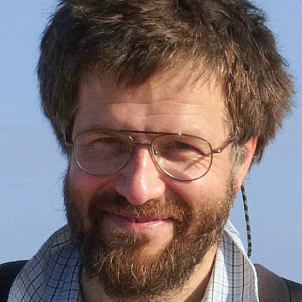About Konstantin Khrapko
mtDNA Mitochondria are cellular organelles responsible for ATP production as well as many other cellular processes, from calcium homeostasis to apoptosis. Mitochondria are the only animal organelle that carries its own genome, mtDNA. mtDNA suffers high levels of somatic mutations which are suspected of being involved in aging and carcinogenesis. We are studying mutations in mtDNA and their effects on cellular physiology, aging and disease. We also use mtDNA mutations to trace mtDNA lineages and to study human evolution.
Mitochondrial population Dynamics: “Stem mitochondria”? Interestingly, mitochondria in the cell behave much like a bacterial population, and the dynamics of this population defines whether mtDNA mutations will realize their detrimental potential or not. We therefore explore the “population genetics” of intracellular mitochondria. We are using somatic mtDNA mutations to trace the ancestry of mtDNA molecules in the cell much like inherited mutations can be used to trace ancestry of a person. In addition, mitochondrial dynamics may be important for preserving of the pristine mtDNA lineage from generation to generation, despite overall high mutational rates in mtDNA. We think that mitochondria within a cell are not equal: there are the “bad” and the “good” mitochondria. While good mitochondria are transmitted to the next generation, the bad ones are discarded. Consequently, we have a great interest in mtDNA in the germ cells and in early development. Mechanisms similar to those preserving the germ line integrity may operate to limit the age-related damage to mtDNA. Same mechanisms may explain some of the beneficial effects of exercise. Most recently, we started the studies of mtDNA epigenetcs, such as mtDNA methylation. We are trying to relate the methylation status of a mtDNA molecule to its “population status” in the cell.
Sources of mtDNA mutations. In addition to studies of mitochondrial population genetics, there are two other research areas in the laboratory. One is the study of the sources of mtDNA mutations. We are particularly interested in the strand asymmetry and the uneven distribution patterns of mutations along the mitochondrial genome.
Human Evolution. The other area is the study of human evolution. We explore the “DNA fossils” i.e. ancient mtDNA sequences that were transferred to the nucleus and were preserved for millions of years in the safety of nuclear environment as mtDNA pseudogenes. These sequences allow us to reconstruct the structure of the ancient populations of human ancestors and clarify the genetics of human evolution.
Approaches
The main approach in our laboratory is single molecule analysis. Our signature technology is high efficiency single molecule PCR supplemented with next generation sequencing (Illumina platform). We are currently developing other approaches for analysis of individual mtDNA molecules based on the latest sequencing technologies (NanoPore and Pacific BioSciences).
Research questions we address:
- Somatic mitochondrial DNA mutations
- their abundance and relevance to human aging and disease
- Dynamics of intracellular mitochondrial population
- Basic Biology of Aging
- Human evolution
Prof. Khrapko is a joint appointment between the College of Science and Bouvé College of Health Sciences.
Khrapko’s lab is studying mutations in mtDNA and their effects on cellular physiology, aging and disease. THey also use mtDNA mutations to trace mtDNA lineages and to study human evolution.
Publications:
-
Google ScholarRead
